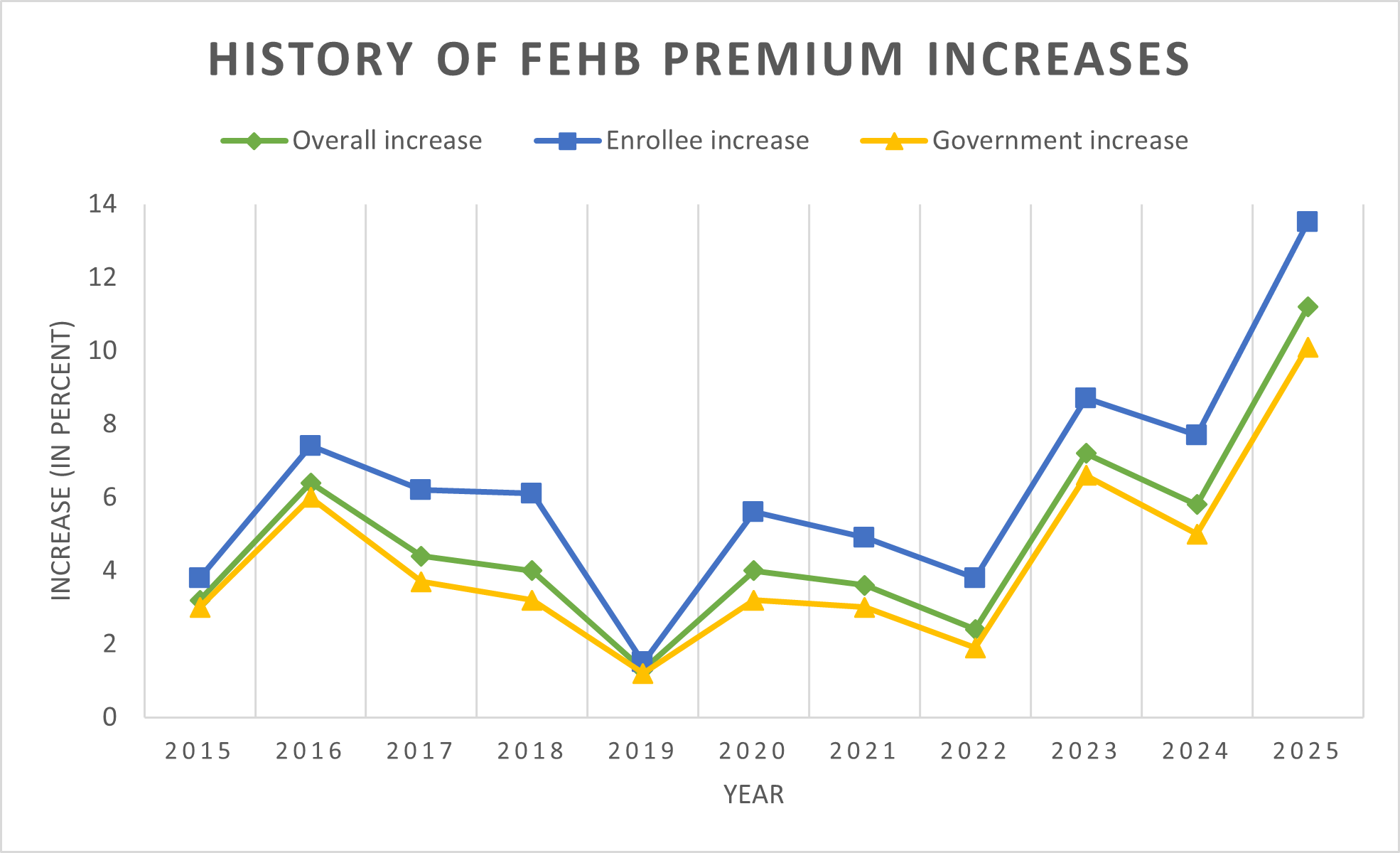In 2025, FEHB enrollees will see largest health premium increase in over a decade

In 2025, FEHB enrollees will see largest health premium increase in over a decade
By Drew Friedman
Enrollees in the Federal Employees Health Benefits (FEHB) program are about to see the largest annual increase in their health insurance costs in at least a decade.
Beginning in January, federal employees and annuitants enrolled in FEHB will pay 13.5% more, on average, toward their health care premiums, according to data the Office of Personnel Management released Wednesday.
The significant premium increase for FEHB plan year 2025 follows a 7.7% jump for 2024, and an 8.7% increase in 2023. OPM said the increase reflects changes in the market over the last year, and generally aligns with other programs in the commercial market. “The premium increases are due to the impact of price increases by providers and suppliers, increased utilization of certain prescription drugs and behavioral health spending,” OPM said. “Industry-wide cost pressures affect FEHB and PSHB rates similarly.”
In dollars, FEHB enrollees will begin paying an average of $26.10 more toward their biweekly health premiums in 2025.
Accounting for both the participant’s and the government’s shares of insurance costs, FEHB health premiums for enrollees will increase by 11.2% on average, when weighted with the government’s contribution, which is increasing by 10.1%.

The breakdown of how much an enrollee versus the government contributes to FEHB premium rates is defined under law. The government covers about 75% of an FEHB participant’s premium, but the number is capped at 72% of the weighted average of the previous year’s premiums.
Premium rates for FEHB change every year, but they inevitably increase to some extent. The percentage increases for FEHB premiums are an average, meaning some plan options will have smaller cost increases, while others will have larger ones.
In contrast, premium increases for new Postal Service Health Benefits (PSHB) program participants will be slightly lower than those for FEHB. Postal enrollees will pay 11.1% more toward their health care premiums. Averaged with the government’s share of the cost, which is increasing by 5.1%, the overall premium increase for PSHB is 6.9%.
“The premium increase for the Postal program is lower than the FEHB premium increase due to greater integration in Medicare required under the Postal Service Reform Act, differences in the cost profiles of the plans offered in each program and demographic factors,” OPM said.
PSHB enrollees, on average, will pay $20 more toward their biweekly health care premiums next year.
In comparison to FEHB and PSHB, CalPERS, which purchases health insurance for California state government employees, announced an average premium increase of 10.79% for 2025. After the federal government, CalPERS is the second-largest public insurance purchaser in the U.S.
